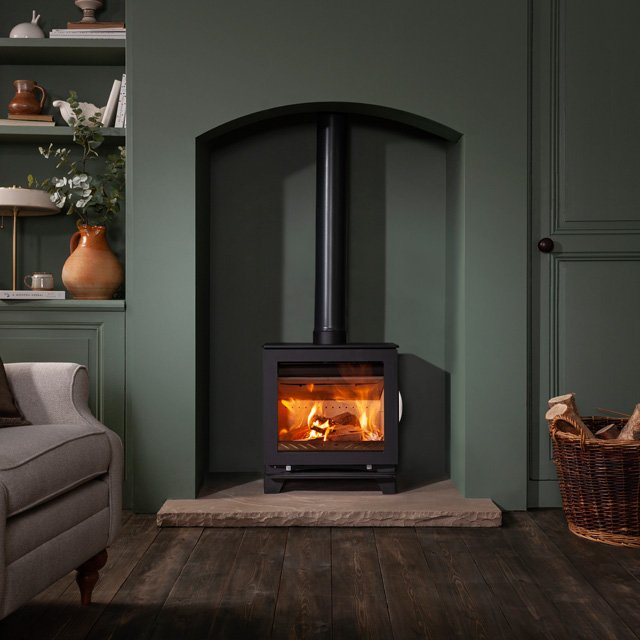0121 271 0221

Creosote and Wood-Burning Stoves
What is Creosote? And how can it affect my Wood Burning Stove?
Creosote is a fairly unhelpful by-product created during the burning of wood. It is a flammable and corrosive substance.
It builds up in the chimney, which is obviously somewhere that you don’t want anything that is likely to set on fire or corrode.
Creosote is created from the gases that are produced when wood is burned. In the case of a wood-burning stove, these are called flue gases. The flue gases are predominantly made up of steam and vaporised carbon.
When these gases solidify they become creosote, and that causes problems when it happens in your chimney.
What causes creosote?
There are several causes that can contribute to creosote build-up in your chimney. Perhaps the main problem is a chimney with a poor draught. If the gases are not drawn up the chimney sufficiently, it is more likely that the flue gas will cool and solidify in the chimney.
One factor that causes this sort of poor draw is a restricted air supply, both down the chimney and in the room where the stove is situated. This ultimately becomes self-fulfilling because creosote itself can restrict air supply.
Using green, unseasoned wood is another cause of creosote build-up. Seasoned dried wood burns more efficiently and hotter. If the wood is unseasoned, the fire isn’t as powerful and the flue is cooler. The gases cool more quickly and will solidify in the chimney.
What are the dangers of creosote?
The main danger, and worst case scenario, of creosote build-up is chimney fire. The flammable deposits can be set alight by a spark or extreme heat from the fire below. It goes without saying that the consequences can be devastating.
On a less life-threatening level, creosote build-up can also cause your wood-burning or multi-fuel stove to run less efficiently and, therefore, cost you more money.
How to avoid creosote build-up
Creosote build-up is nowhere near as much of a problem with modern stoves as it once was. Most stoves are fitted with a baffle and secondary air system, both of which are technologies created to maximise the amount of gas that is burned in the firebox and minimise the amount of flue gases that are produced.
Using dry, seasoned wood is another way of avoiding creosote build-up. This is also a way to increase the intensity of the fire in the stove and ensure that more gases are burnt.
It’s also important that you regularly get your chimney swept. This removes any creosote that has built-up and reduces the risk of a chimney fire.
To ensure that the job is done properly, call upon the services of a Hetas-approved chimney sweep. It’s also worth checking out the National Association of Chimney Sweeps – itself a Hetas-approved training centre – which does excellent work as a professional trade association to promote the highest standards of chimney sweeping, inspection and maintenance.
